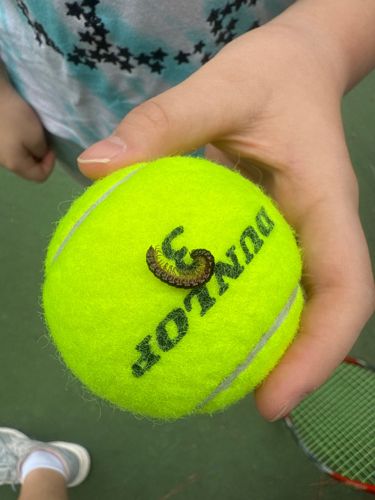Millipede
Scientific Name: Too many species to identify without clearer morphological details and location data, but all belong to the Class Diplopoda. A common scientific name for a group they might resemble is 'Narceus americanus' (American giant millipede), though the specimen in the image is much smaller.
Order & Family: Order Diplopoda (not in an insect order; Diplopoda is a class within the subphylum Myriapoda. Family widely varies, but often Polydesmida for flat-backed millipedes or Julida for cylindrical ones.)
Size: Millipedes vary greatly in size by species, ranging from a few millimeters to over 35 centimeters (14 inches) in tropical species. The one in the image appears to be in the range of 1-4 cm based on its size relative to the tennis ball.

Natural Habitat
Damp, dark places with abundant decaying organic matter, such as under logs, rocks, leaf litter, in soil, and sometimes in basements or other moist indoor areas.
Diet & Feeding
Mostly detritivores, feeding on decaying plant matter such as leaves, wood, and other organic debris. Some species may occasionally feed on fungi or soft plant tissues.
Behavior Patterns
Millipedes are typically nocturnal and prefer dark, damp environments. When disturbed, many species, including this one, curl into a tight coil to protect their soft undersides. They move relatively slowly, with a wave-like motion of their many legs. During mating, males can transfer sperm packets to females. Females lay eggs in soil or decaying wood.
Risks & Benefits
Generally harmless to humans. They do not bite or sting. Some species can excrete defensive liquid containing compounds like hydrogen cyanide, which can cause skin irritation or discoloration, but this is rare and usually requires direct contact. Benefits include their crucial role as decomposers in ecosystems, breaking down organic matter and returning nutrients to the soil, which aids in soil formation and plant growth.
Identified on: 8/20/2025